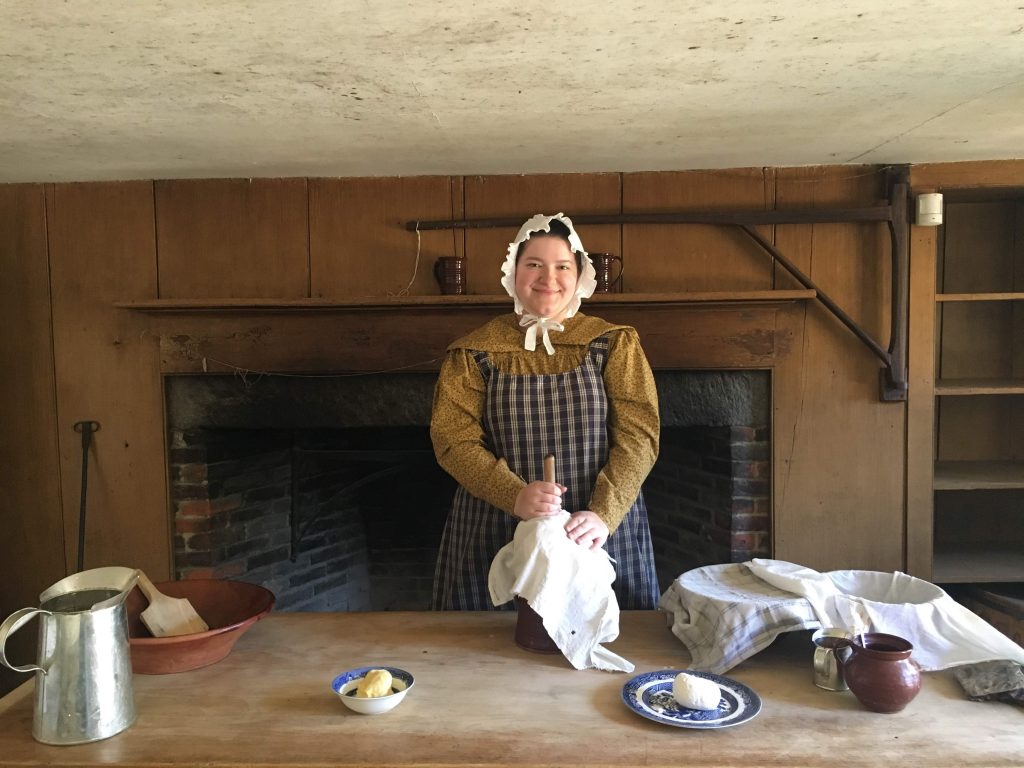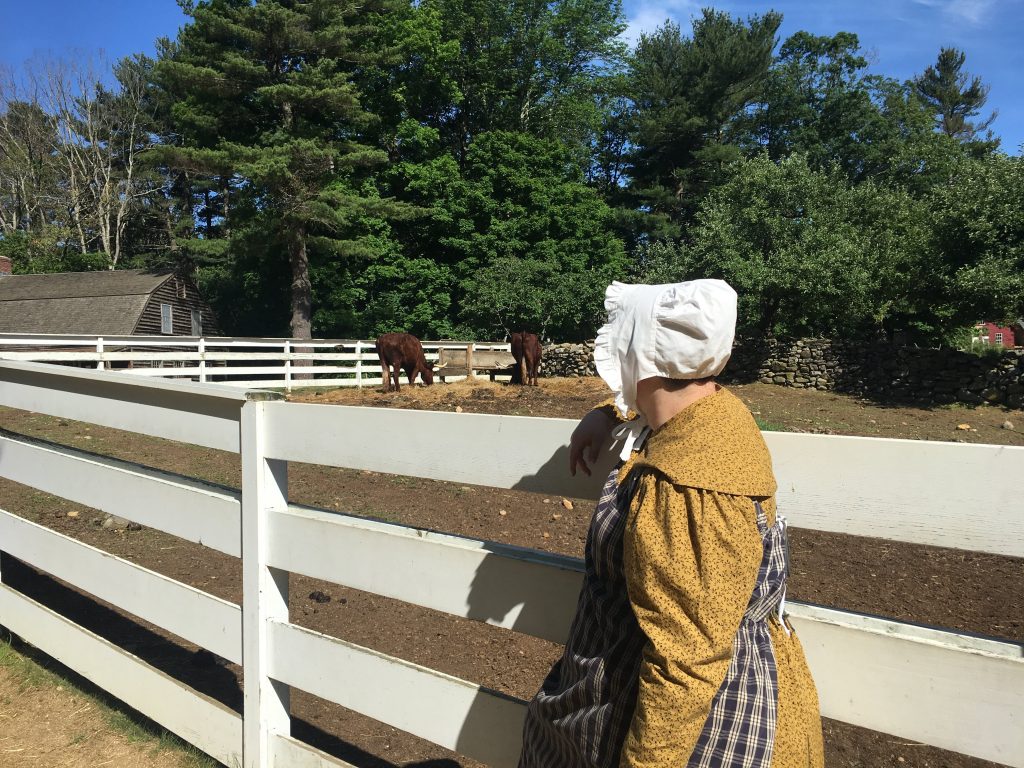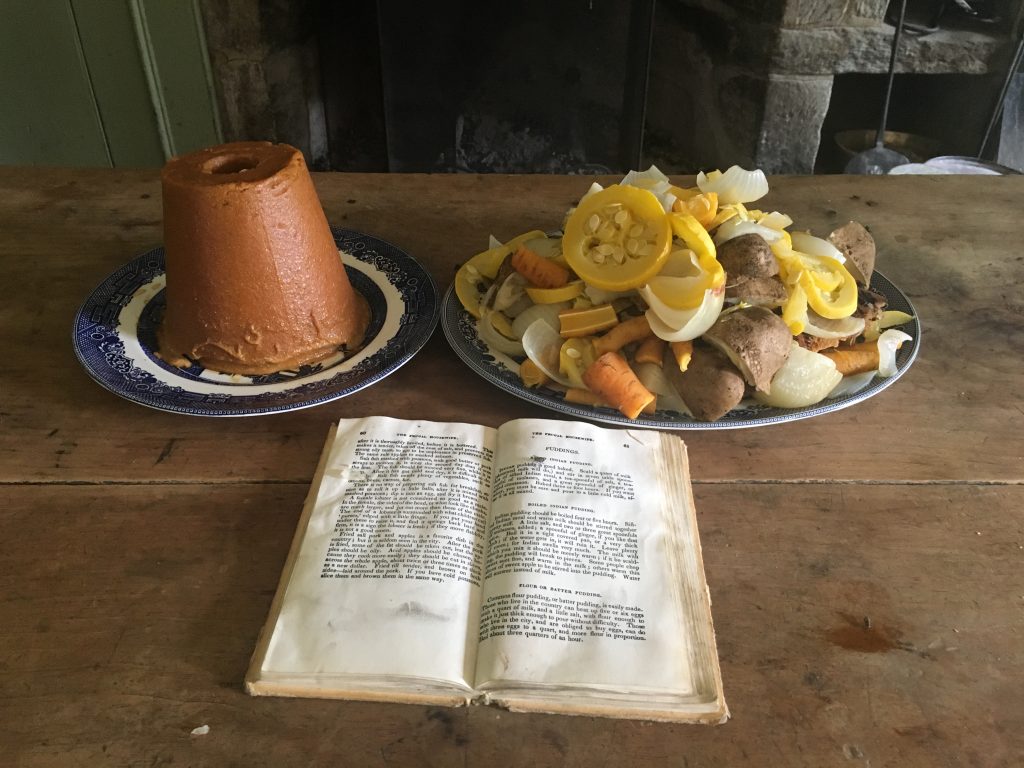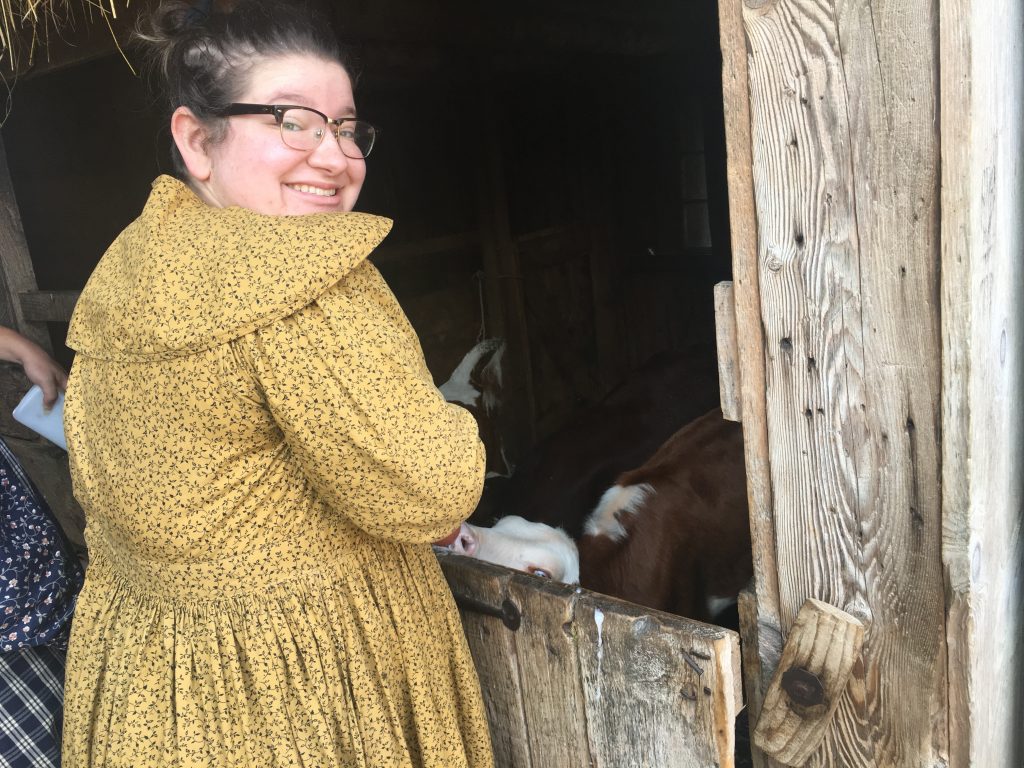1838
This internship, admittedly, was hard to explain. I was to work as a Historic Interpretation intern at Old Sturbridge Village. Essentially, I would spend the summer churning butter, cooking over a hearth, gardening, and explaining the history of rural New England in the 1830s to museum-goers. I was excited, but it was a hard sell for my parents. Still, I managed to land a paid (paid!) history internship with housing, which was prestigious enough, and as I walked through the outdoor living history museum for the first time, I knew I was in the right place.
Costumed interpreters explained and demonstrated history in the most beautiful place I’d ever seen. Farmers and homemakers and blacksmiths and potters and shoemakers weren’t just pretending to do the work; they were actually doing it. They could answer every question thrown at them, with a smile on their face and their attention to their task. I felt, immediately, that I could thrive in this scenario, and I couldn’t wait to get started.
After two weeks of training, I was assigned to four locations to work. The Fitch house, the home of a printer and his family; The Bixby house, the home of the blacksmith and his family; the Towne Dairy, wherein I made cheese and butter; and, finally, gardens.
Each location came with its own history to memorize and interpret. At first, it seemed like a lot; I would never be able to remember that the Bixby house was from Barre, Massachusetts, let alone that it was built in 1808, and that its occupants were Emerson Bixby, his wife Laura, and their three teenage daughters, Ruth, Eliza, and Lucy. Let alone talk about that information while boiling dinners over raging hearth fires.
The summer seemed to pass by quickly enough; before I knew it, it was July, then August. I became more adept at knitting and sewing and cooking, but more importantly, I excelled in interpretation. I began to wonder, what if this is the career for me?
I didn’t necessarily think costumed interpretation was in my future, although I did enjoy my work. However, I could see how passionate I was about the concept of living history and how passionate I was about the museum– maybe working in museums was in my future.
I began to look at graduate programs to narrow down possible plans. Museums studies programs seemed interesting, and so did public history. I found a few programs, but after talking to my parents and my advisor, I felt as though I needed to narrow down exactly what I wanted to do within museums. The best thing about my internship at my museum was if I had a question about a department, I could go to the department head and ask. If I was curious about curation, I could talk to the curatorial director. Archives? I could talk to the lead historian. Development? I spent my day off shadowing the Associate Director of Development.
Now that I’m back in the 21st century, I’m asking myself, now what?
Now what includes applying to museum internships for the fall and spring semester. Now what means inquiring to graduate programs in D.C., Chicago, and New York. It means preparing for my senior seminar and enjoying my senior year before jumping head first into my future.
Graduation is coming, and so is a future in history. From 1838 to 2018, my life is changing, but only for the better.





